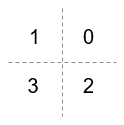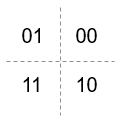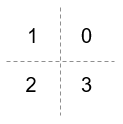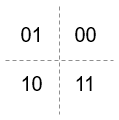comm.OQPSKDemodulator
OQPSK 方式を使用した復調
説明
comm.OQPSKDemodulator オブジェクトは、入力波形に対してパルス整形フィルターを適用し、オフセット直交位相偏移変調 (OQPSK) 手法を使って変調された信号を復調します。詳細については、パルス整形フィルターを参照してください。入力は、変調信号のベースバンド表現です。
変調器と復調器のペアの処理によって発生する遅延の詳細については、変調の遅延を参照してください。
OQPSK 変調された信号を復調するには、以下の手順に従います。
comm.OQPSKDemodulatorオブジェクトを作成し、そのプロパティを設定します。関数と同様に、引数を指定してオブジェクトを呼び出します。
System object の機能の詳細については、System object とはを参照してください。
作成
構文
説明
oqpskdemod = comm.OQPSKDemodulator
oqpskdemod = comm.OQPSKDemodulator(mod)mod に対して対称的な構成をもつ復調器 System object を作成します。変調器オブジェクトが IIR フィルター (PulseShape='Custom' かつ FilterDenominator がスカラーではない) の場合、復調器は PulseShape='Custom' かつ FilterNominator=1 の積分とダンプ (I&D) フィルターになります。
oqpskdemod = comm.OQPSKDemodulator(Name,Value)
例: comm.OQPSKDemodulator('BitOutput',true)
oqpskdemod = comm.OQPSKDemodulator(phase,Name,Value)phase に対して作成されたオブジェクトの PhaseOffset プロパティを設定し、指定されたその他の Name、Value ペアを設定します。
例: comm.OQPSKDemodulator(0.5*pi,'SamplesPerSymbol',2)
プロパティ
使用法
入力引数
出力引数
オブジェクト関数
オブジェクト関数を使用するには、System object を最初の入力引数として指定します。たとえば、obj という名前の System object のシステム リソースを解放するには、次の構文を使用します。
release(obj)
例
詳細
拡張機能
バージョン履歴
R2012a で導入





